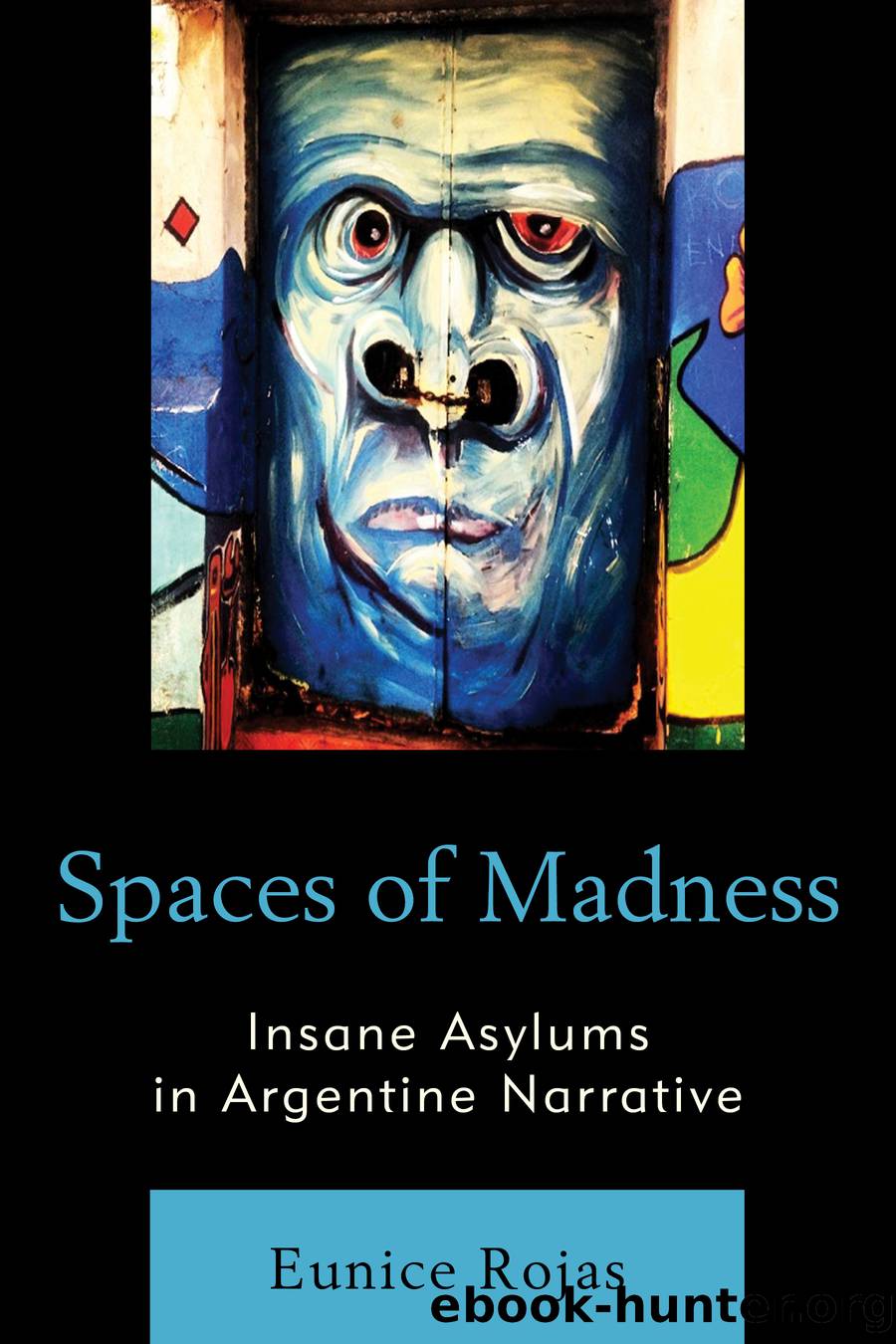Spaces of Madness by Rojas Eunice;

Author:Rojas, Eunice;
Language: eng
Format: epub
Tags: undefined
Publisher: Lexington Books/Fortress Academic
Published: 2012-08-15T00:00:00+00:00
Perhaps he does so because he is eccentric, because he is insolent and outspoken, because he works in a madhouse producing art with the most demented of madmen.
Bolek understands her, therefore, precisely because he has experience with the insane, and Osorio consequently admires him because of his ability to appreciate and comprehend her contradictory nature.
Osorioâs desire is, in Girardian terms, âmetaphysicalâ in that âmetaphysical desire thus describes a desire not for the objects of desire but for the modelâs uniqueness, spontaneityâhis or her âqualitiesââ (Fleming 24). Bolek âque supo desviar el rÃo de la enfermedad mental y volverlo creativoâ (âwho knew how to divert the river of mental illness and make it creativeâ) (92) is worthy of Osorioâs admiration for his ability to transform the insane into artists. According to Chris Fleming, âGirard maintains that the possession of objects is merely a path, the perceived privileged route, to the attainment of the ontological self-sufficiency detected in the rivalâ (24). The scholars discussed above have analyzed Osorioâs journey in the novel as a quest for order (Cook), a scientifically based movement from chaos to order (DÃaz), a nomadic de-territorialization leading to a re-territorialization (Medeiros-Lichem), an existential interpretation through the erotic act of writing (Zabeo), and a âreclamation of the right of subjecthood as a thinking, desiring and writing human beingâ (MartÃnez 103). All of these quests constitute searches for something that falls into the general category of the ontological self-sufficiency described by Girard. Bolek embodies for Osorio the ultimate goal of all of these quests in that he has the ability to create order out of chaos and does so on a daily basis with his patients. Unlike Osorio he appears to have no need for nomadism or existential interpretation, and he seems to have already forged for himself a satisfactory identity as an artist.
The patients at Creedmoor claim that whereas before Bolek they were nothing, ever since he has begun to work with them they wake up every day knowing that they are artists (LTr 63). According to Osorio, Bolek is a daily hurricane for the psychiatric patients, and the wind that he creates for them sets them free. When Osorioâs friend Raquel has a glass sculpture shattered to pieces by a literal hurricane, the two women sweep the glass fragments into a pile, and then Osorio lightheartedly writes a label for the glass heap presenting it as work of art created by Raquel and Hurricane Candy in collaboration and remarks that Bolek would be proud (LTr 64). This incident causes Osorio to relate the glass fragments to the fragments of her own life, and she imagines that if she only had a blow-torch she could create something solid out of the pile of glass. According to Gwendolyn DÃaz, this scene prefigures in visual form Marcelaâs trajectory from order to chaos and back to a new order (âUna Odiseaâ 81). While this assessment is true, it neglects the importance of Bolekâs role in Osorioâs journey. Though she does not yet
Download
This site does not store any files on its server. We only index and link to content provided by other sites. Please contact the content providers to delete copyright contents if any and email us, we'll remove relevant links or contents immediately.
4 3 2 1: A Novel by Paul Auster(11788)
The handmaid's tale by Margaret Atwood(7447)
Giovanni's Room by James Baldwin(6808)
Asking the Right Questions: A Guide to Critical Thinking by M. Neil Browne & Stuart M. Keeley(5355)
Big Magic: Creative Living Beyond Fear by Elizabeth Gilbert(5351)
Ego Is the Enemy by Ryan Holiday(4956)
On Writing A Memoir of the Craft by Stephen King(4661)
The Body: A Guide for Occupants by Bill Bryson(4580)
Ken Follett - World without end by Ken Follett(4443)
Bluets by Maggie Nelson(4260)
Adulting by Kelly Williams Brown(4231)
Eat That Frog! by Brian Tracy(4147)
Guilty Pleasures by Laurell K Hamilton(4116)
White Noise - A Novel by Don DeLillo(3829)
The Poetry of Pablo Neruda by Pablo Neruda(3813)
Fingerprints of the Gods by Graham Hancock(3733)
Alive: The Story of the Andes Survivors by Piers Paul Read(3729)
The Book of Joy by Dalai Lama(3694)
The Bookshop by Penelope Fitzgerald(3618)
